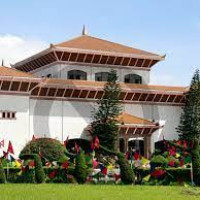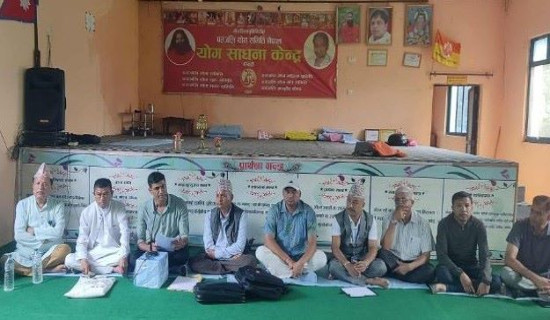- Sunday, 31 August 2025
Invasive species threaten food supply for wildlife in KTWR
By Baburam Karki,Barahakshetra, July 13: The spread of invasive plant species in the Koshi Tappu Wildlife Reserve (KTWR) is causing a shortage of food for wild animals.
These fast-growing weeds and vines are increasing in both the buffer zones and forest areas of the reserve, affecting the natural food supply of wildlife.
According to Bhupendra Prasad Yadav, Chief Conservation Officer at KTWR, the growing presence of invasive weeds is not only reducing food availability but also affecting animal health, the environment and overall biodiversity. “These plants are spreading widely and are having a serious impact on the ecosystem,” he said.
Koshi Tappu is Nepal’s first Ramsar-listed wetland. But now, the existence of this wetland is under threat due to the aggressive spread of invasive species. These harmful plants are taking over protected areas, harming native trees and shrubs and making it difficult for them to grow. As a result, the wildlife in the reserve is finding it harder to get enough food.
Weeds such as Banmara (Lantana), Gandhe jhar (wild aromatic weed) and water hyacinth are spreading rapidly in the reserve. The Reserve Office said these plants grow and spread faster than native species and can reproduce easily through roots, stems, leaves and seeds.
These invasive plants are especially common in open areas, grasslands, forests and along the borders of the reserve. Yadav explained that these plants have high disease resistance and can spread quickly even in tough weather conditions.
“The reserve’s environment is quite suitable for them, which is why their growth has become uncontrollable,” he said. He warned that these weeds pose a serious threat to the reserve’s biodiversity and ecological system.
Even endangered species in the reserve are being affected. These weeds cover grazing areas, blocking animal movement paths and encroaching on their habitats. As a result, animals are losing access to open fields and native grasses, which need sunlight and warmth to grow. This has led to a decline in grazing lands and a shortage of food for grazing animals.
Koshi Tappu, listed as a Ramsar site in 1987, is home to many species of birds, fish, endangered wild buffalo (Arna) and gharial. But the spread of invasive weeds is drying up water sources, affecting animals that depend on them.
According to ornithologist Anish Timilsina, water hyacinth and other invasive species are covering wetland areas, threatening the habitat and feeding grounds of waterbirds in what is known as the “capital of birds.”
Experts said that the problem is growing because these invasive species can quickly adapt and reproduce in new environments. Their spread is causing serious damage to both the forest and wetland ecosystems. As the weeds spread, they are narrowing ponds, drying marshy lands, blocking sunlight and killing native aquatic plants.
Invasive species found in the reserve include -- Water hyacinth (Jalkumbhi), white Banmara, black Banmara, creeping Banmara, Banphada, Lunde kanda (thorny plants), Lajjawati (touch-me-not), Gandhe, blue Gandhe, water mint, Thakal, black kuro, flowering weeds, Chitlange, Bansilam, Besaram, Karounte grass, wild sorrel, leafy weeds and Kumbhika, among others.
(Photos by Baburam Karki) Caption: Invasive weeds spreading across the forest and buffer zone of Koshi Tappu Wildlife Reserve
















